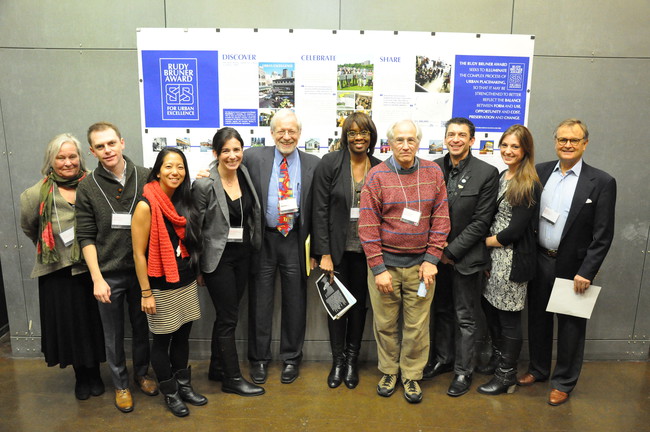
The fine art of reimagining what post-industrial cities can become through better design took the spotlight last week at the 2013 Bruner Loeb Forum, held in Detroit, Michigan. Organized in partnership with the J. Max Bond Center on Design for the Just City, the Detroit Collaborative Design Center, and The American Assembly at Columbia University, the symposium drew an invitation-only roster of about 100 architects and planners, developers, government staffers, academics, and media to share best design practices and innovations from cities that struggle with chronic population loss and land vacancy.
The social impacts of urban redesign was a key theme. Resident involvement can prove particularly important in legacy cities because any project invariably encroaches on people already living there. Roberta Feldman of the University of Illinois at Chicago recounted the story of citizen involvement in the remaking of Chicago’s Cabrini-Green housing project, razed and rebuilt as mostly market rate housing. Feldman said she and other advocates of public interest architecture were able to inject some democratic design strategies in what threatened to be just another yuppie upscale development. Residences for moderate income people from the old Cabrini-Green were included, as well as playgrounds, which the redevelopers had initially left out of their design plan for young professionals.
A popular theme during the work sessions was the removal of the expressways that had sliced and diced cities a generation or two ago. Case studies from Syracuse, Milwaukee, and other cities illustrated the trend. “Like weeds, the freeway in the city is the wrong thing. It’s a failed experiment in America,” said urban planner Peter J. Park. “When you take freeways out of cities, they get better.”
A willingness to experiment with short-term pop-up installations found a lot of acceptance at Legacy Cities Design. The practitioners remained humbled by the lessons of previous city builders, when hubris led to massive projects that often wounded cities deeply. One antidote is a reliance on temporary projects as a city feels its was toward a new solution. “I think we have to admit we don’t really know what’s going to happen to a lot of these cities,” said Terry Schwarz, director of the Cleveland Urban Design Collaborative at Kent State University.
Toni L. Griffin, director of the J. Max Bond Center, said the forum achieved key goals, including producing a more robust catalogue of real-world projects now underway in legacy cities and bringing people together who normally worked independently in their separate communities. “I think we want to continue the conversation in a way that deepens the amount of knowledge that we have about these cities and the design opportunities,” she said. “And I hope that we can continue to follow up in some way as an advocate for why design matters in these cities.”

Post a comment to this article
Report Abusive Comment